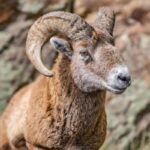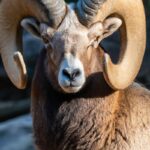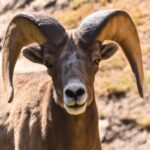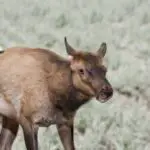Hunting in Wyoming’s wilderness areas is a great way to experience the state’s natural beauty and wildlife.
There are many different types of hunting available, including big game, small game, waterfowl, and upland bird hunting. You’ll need to get a Wyoming hunting license and follow all of the state’s regulations.
The main difference between hunting in Wyoming’s wilderness areas and other areas is that you’ll be more likely to encounter large animals like elk, deer, and bighorn sheep. These animals are often found in remote areas where there is little human activity.
This means that you’ll need to be prepared for backcountry camping and hiking. You should also be aware of your surroundings at all times and take precautions against bears and other predators.
What is the difference between an area designated as wilderness according to the Wilderness Act and a national park?
The main difference between an area designated as wilderness according to the Wilderness Act and a national park is that wilderness areas allow regulated hunting, while national parks do not.
Additionally, although wilderness areas prohibit logging, mining, and motorized vehicles, some resource extraction, and livestock grazing persist in areas where those activities occurred prior to its wilderness status.
What makes a wilderness area?
There are a few things that make a wilderness area. First, it must be an area where the earth and its community of life are untrammeled by man. This means that humans have not significantly altered or changed the land.
Second, it must be an area where man himself is a visitor who does not remain. This means that people do not live in or permanently stay in wilderness areas.
Lastly, the purpose of a wilderness area is to preserve and protect the natural ecosystems and wild areas.
What is the difference between national forest and wilderness area?
There are two types of federally managed land in the United States: national forests and wilderness areas. Both are important for protecting our natural resources, but they differ in how they are managed.
National forests are managed with the goal of maintaining a healthy ecosystem while also providing opportunities for recreation and economic development. This means that some amount of regulation is necessary to prevent overuse and damage to the forest. However, overall, national forests are relatively free from restrictions when compared to other types of land.
Wilderness areas, on the other hand, are managed with the goal of preserving them in their natural state. This means that much stricter rules are in place in order to minimize human impact.
In some cases, this can even mean prohibiting all access by humans. The reasoning behind this is that wilderness areas provide an important refuge for plants and animals who might otherwise be displaced or harmed by human activity.
Overall, it is clear that both national forests and wilderness areas play an important role in protecting our environment. However, they differ significantly in how they are managed.
What does it mean when an area is designated as wilderness?
When an area is designated as wilderness, it means that the land is protected and managed in a way that preserves its natural ecosystems and wild character. The Wilderness Act of 1964 sets out the criteria for what qualifies as wilderness, and its purpose is to preserve these areas for future generations.
How big does a wilderness area have to be?
The Clean Air Act establishes human health and welfare standards, and it also establishes Class I areas. These are wilderness land areas that are greater than 5,000 acres, or 2,000 hectares. Additionally, national parks must be greater than 6,000 acres, or 2,400 hectares.
What defines a wilderness area?
A wilderness area is defined as an area where the earth and its community of life are untrammeled by man, where man himself is a visitor who does not remain. The Wilderness Act of 1964 established this definition in order to preserve and protect natural ecosystems and wild areas. Additionally, the Act provides opportunities for solitude and retrospective or primitive recreation.
What is the purpose of BLM land?
The Bureau of Land Management (BLM) is a federal government agency that manages public lands for a variety of uses. These uses include energy development, livestock grazing, recreation, and timber harvesting. The BLM also works to ensure that natural, cultural, and historic resources are maintained for present and future use.
Where is the best elk hunting in Wyoming?
If you’re looking for the best elk hunting in Wyoming, look no further than Bridger-Teton National Forest and Shoshone National Forest. These two areas are renowned for their abundance of elk, including plenty of bulls.
Bridger-Teton offers an excellent alpine setting for hunting, while Shoshone is perfect if you’re seeking a true wilderness experience. Whichever location you choose, you’re sure to have a successful hunt.

Can a non resident hunt in Wyoming without a guide?
No, a non resident cannot hunt in Wyoming without a licensed guide or resident companion.
According to the Wyoming statute, anyone who wants to hunt big or trophy game in federally designated wilderness areas must have a licensed guide or resident companion.
The resident companion will need to get a free non-commercial guide license from a Game and Fish office.
Do wilderness areas allow hunting?
Yes, wilderness areas managed by the Bureau of Land Management, Fish and Wildlife Service, and Forest Service do allow hunting. In fact, over 40 National Park Service units allow hunting, with about a third of those being designated wilderness areas.
So what makes hunting in wilderness different? For starters, most wilderness areas are located in remote or hard-to-reach locations. This means that hunters often have to hike long distances to get to their desired hunting spot.
Additionally, because there are no developed roads or trails in many wilderness areas, hunters may have to bushwhack their way through dense vegetation.
Another key difference is that Wilderness Areas are often home to more wildlife than developed areas. This is because these areas offer little human disturbance and provide ideal habitat for many species of animals.
What does BLM land mean in Wyoming?
When you hear the term “BLM land,” it’s referring to public lands that are managed by the Bureau of Land Management. In Wyoming, BLM land includes some of the state’s most iconic scenery, from the red-rock canyons of the Bighorn Basin to the snow-capped peaks of the Wind River Range.
Whether you’re looking to hike, camp, fish, or just take in the stunning views, BLM land is a great place to do it. And because these lands are managed by a federal agency, they’re open to everyone – so you can enjoy them no matter where you live.
Can you hunt on any BLM land in Wyoming?
Yes, you can hunt on any BLM land in Wyoming. This includes both USFS lands and state lands that are open for hunting. However, there are some exceptions to this rule. Specifically, you cannot hunt on cultivated crop land.
What does BLM mean on property?
The BLM acronym stands for the Bureau of Land Management. This is a division of the United States Department of Interior that oversees more than 245 million acres of public land. So, if you see BLM on a piece of property, it means that it is managed by the federal government.







